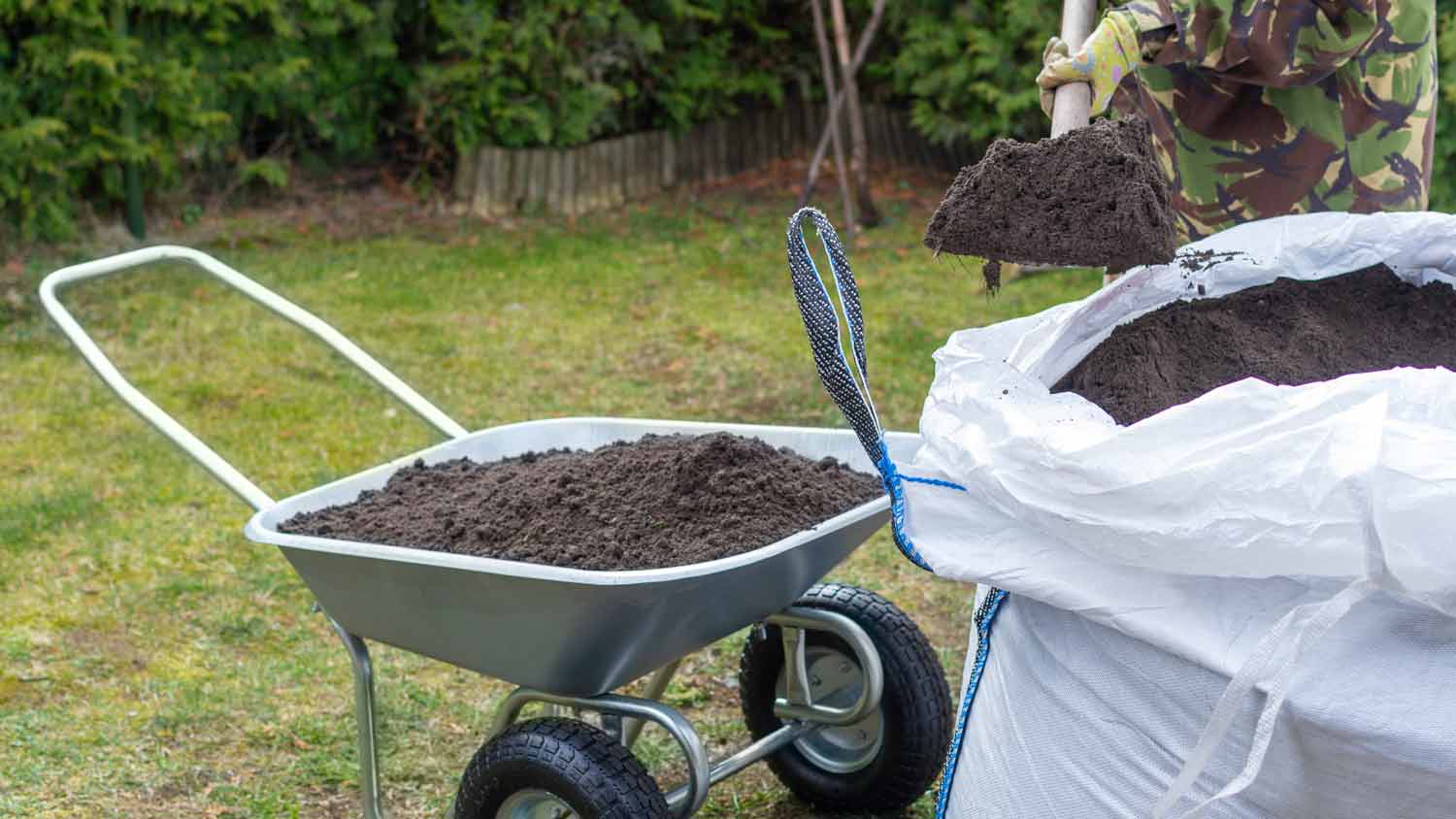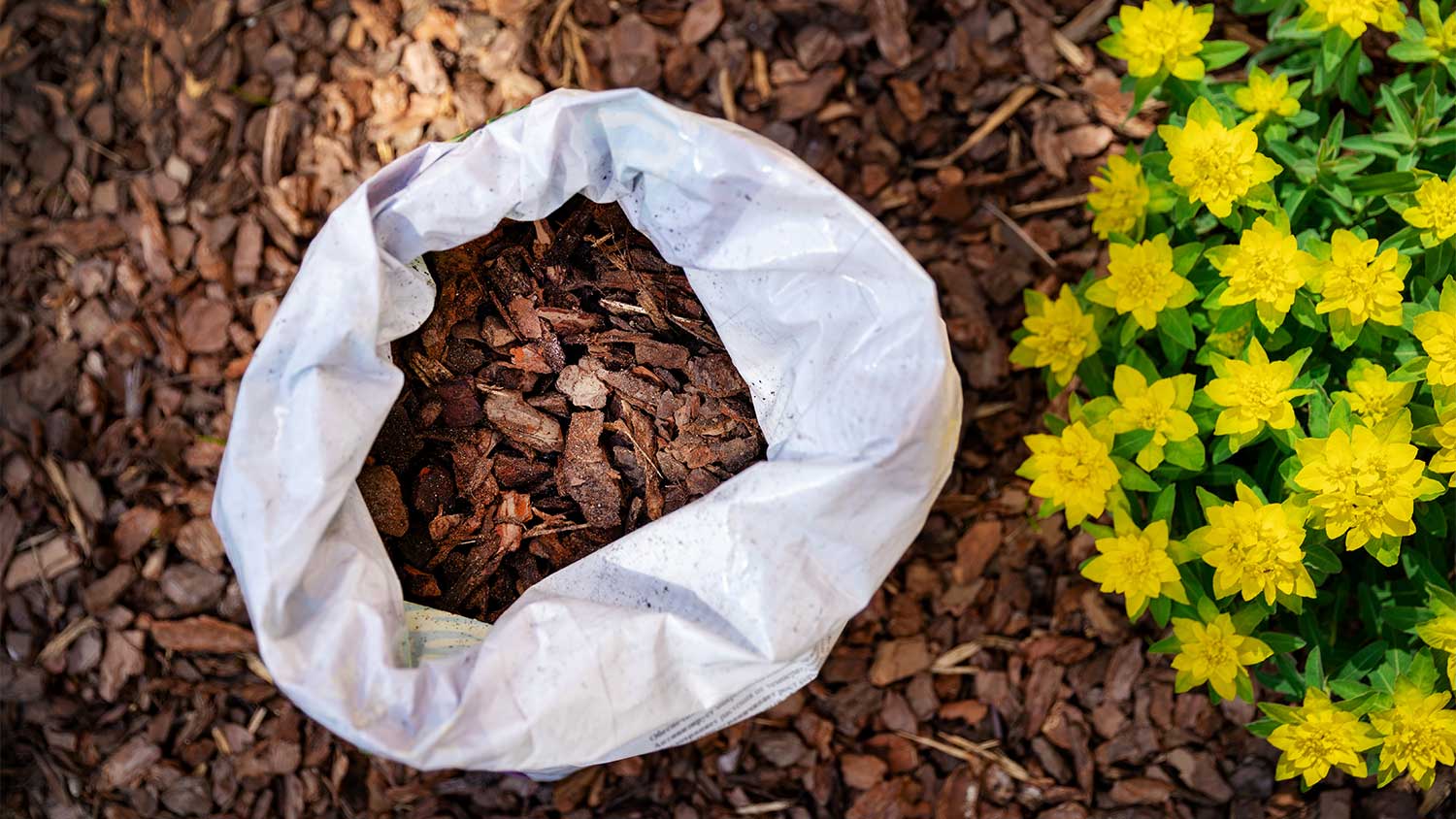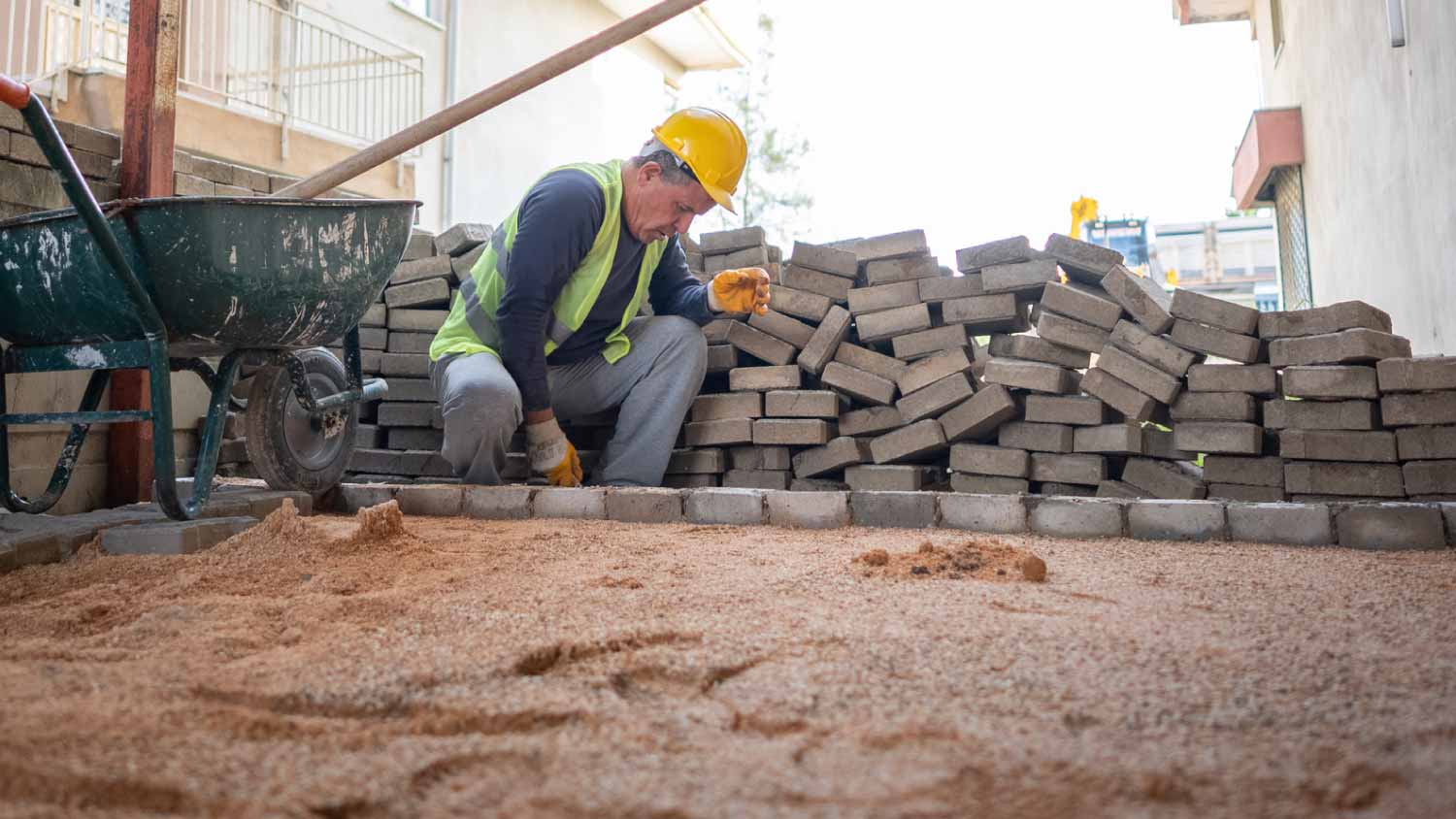
Get clear, up-to-date fill dirt cost info. Learn average prices, cost factors, and tips to save on your next fill dirt project.
The average sand delivery cost is $850, with most homeowners paying between $200 and $650. Main factors include sand type, quantity, delivery distance, and labor.


Sand delivery brings bulk sand directly to your home or work site for landscaping, construction, or play areas.
Sand delivery cost factors include sand type, quantity, delivery distance, and labor fees for unloading or spreading.
Investing in quality sand and professional delivery can support long-lasting landscaping or construction results.
Completing sand delivery ensures your project stays on schedule and avoids delays from sourcing or transporting materials yourself.
Preparing your site in advance and bundling installation with delivery can help minimize extra labor or handling charges.
Sand delivery cost averages $850, with most homeowners paying between $200 and $650. Your price depends on the type of sand, order size, delivery distance, and labor needs. Expect to pay $15 to $50 per ton or $30 to $70 per cubic yard, plus delivery fees. Understanding these factors helps you confidently budget for your sand delivery project.
Let’s explore what goes into sand delivery cost and how to get the best value for your next landscaping or construction job.
A few core cost drivers shape every sand delivery project. Let’s break down how sand type, order size, materials, labor, prep, tipping, and other variables affect what you’ll pay.
Choosing the right sand is the first—and often most significant—factor affecting your total sand delivery cost. Common options include mason sand for mortar work, concrete sand for mixing, play sand for playgrounds, fill sand for leveling, and specialized blends for pavers or decorative jobs. Each type serves a different purpose and carries its own price tag.
Higher-quality sands, such as washed or graded varieties, cost more but offer better consistency and fewer impurities. Specialty sands, like colored or silica sand, can increase the delivery price further due to sourcing and processing.
| Sand Type | Use | Average Cost per Cubic Yard |
|---|---|---|
| Mason sand | Mortar, masonry work | $40–$60 |
| Concrete sand | Mixing concrete | $35–$55 |
| Play sand | Playgrounds, sandboxes | $50–$70 |
| Fill sand | Leveling, backfill | $30–$45 |
| Paver sand | Paver bases, patios | $40–$65 |
| Specialty sand | Decorative, filtration | $75–$150 |
The amount of sand you order—measured in tons, cubic yards, or full truckloads—directly impacts your sand delivery cost. Most suppliers offer lower rates per unit for bulk orders, though minimum order requirements often apply. Small deliveries tend to cost more per yard due to flat delivery fees and less efficient logistics.
| Order Size (Tons or Yards) | Average Cost per Delivery | Notes |
|---|---|---|
| 1 ton / 1 cubic yard | $100–$200 | Minimum order, higher per-unit cost |
| 5 tons / 3–4 cubic yards | $250–$400 | Standard residential delivery |
| 10 tons / 7–8 cubic yards | $400–$650 | Lower per-unit, suitable for driveways |
| Full truckload (20+ tons) | $700–$1,200 | Bulk discount, best value |
Not all sand is created equal. The material’s source (local vs. imported), quality (washed, screened, or unwashed), and intended use influence the final sand delivery cost. Washed or graded sand is cleaner and more consistent but costs more. Specialty blends, including eco-friendly or decorative options, command premium rates due to added processing or transport.
| Material Type | Description | Average Cost per Unit |
|---|---|---|
| Washed sand | Cleaned, few impurities | $25–$50 per ton |
| Unwashed sand | Basic, may contain clay or debris | $15–$30 per ton |
| Graded sand | Consistent particle size | $30–$60 per ton |
| Specialty blend | Decorative, colored, or silica-based | $40–$100 per ton |
Labor is a significant component of sand delivery cost, especially if unloading, spreading, or installation is included. Your total may cover the driver, additional laborers, or equipment operators. Labor rates vary by region, project size, and site accessibility. Inaccessible sites or complex projects can increase costs due to extra time or special equipment.
Labor for unloading or spreading sand often ranges from $30 to $60 per hour. If installation or grading is needed, expect higher labor charges or bundled service fees.
Site preparation ensures your sand delivery goes smoothly and safely. Prep work might include clearing debris, grading, or leveling the delivery area. If your site is hard to access—think steep slopes or narrow gates—extra prep or equipment rental (like skid steers or wheelbarrows) may be needed. Prep costs are often billed separately or as part of a flat setup fee, depending on your provider.
Tipping is not always required, but it’s a thoughtful way to thank your delivery team for careful, timely service. For sand delivery, tips often range from $10 to $25 per delivery or 5% of the total labor cost. Consider tipping more for heavy loads, tricky sites, or if the crew goes above and beyond.
A few extra variables can affect your final sand delivery cost:
Permits: Large deliveries or street placement may require a city permit, which can add $25 to $100.
Cleanup: Post-delivery cleanup or debris removal may add $50 to $200, depending on scope.
Disposal: Removing excess or old sand incurs disposal fees, often $20 to $50 per load.
Add-ons: Rush delivery, after-hours service, or special handling each come with additional charges.
Decorative or specialty sand can increase costs due to sourcing and handling.
Let’s look at what you might spend on sand after the initial delivery, including maintenance, operating, repairs, and insurance.
Sand installations sometimes need topping off, especially for playgrounds, sports fields, or paver bases. Replenishing sand can cost $50 to $200 per year, depending on usage and weather. Erosion control and weed management may require periodic sand replacement, especially after heavy rains or storms.
Moving or spreading sand after delivery often requires equipment like compactors or spreaders. Renting this equipment costs $50 to $150 per day. If your site is remote or hard to access, additional delivery fuel charges can add $20 to $75 per trip. These operating expenses are important for larger or ongoing projects.
Occasional repairs help maintain the safety and appearance of sand installations. Fixing uneven surfaces, adding replacement sand, or correcting drainage issues can cost $100 to $400, depending on severity. If sand becomes contaminated or installation is done incorrectly, you may pay extra for removal and replacement.
Large sand delivery projects sometimes require special insurance. Most reputable sand delivery companies carry liability insurance to cover property damage during delivery. For major jobs, you can request proof of insurance or ask about optional warranty coverage. Homeowners rarely need separate insurance unless the delivery is unusually large or complex.
Put simply, sand is a pain to move. It’s heavy, messy, and takes real grit and muscle to haul, unload, and spread, especially in bulk. Also, between truck rentals, multiple trips, and other surprises, DIY costs can add up fast. A sand delivery pro near you can source the right sand, deliver it efficiently, and help keep your project on schedule and budget without the backbreaking work.
Even straightforward sand projects come with logistical challenges that professionals are best suited to manage, including:
Delivering the correct type and quantity of sand for your specific project
Eliminating the need to rent trucks, trailers, or heavy equipment
Handling unloading, placement, or spreading
Reducing the risk of ordering too much or too little material
Keeping landscaping and construction projects moving without delays
Some parts of a sand project are manageable on your own, especially for small jobs or prep work:
Measure your space to estimate how much sand you’ll need
Choose the appropriate sand type for landscaping, play areas, or masonry
Prepare the delivery area by clearing debris or leveling the ground
Spread small amounts of sand using basic tools like shovels or wheelbarrows
Many homeowners choose to bundle extra services with their sand delivery for convenience and better results. Popular add-ons include:
Spreading or installation service: $50 to $150 per load
Weed barrier installation: $40 to $100 per 100 square feet
Gravel or base layer delivery: $50 to $200 per load
Decorative sand upgrades: $40 to $100 per ton
Erosion control products: $30 to $75 per 100 square feet
Bundling these services with your sand delivery can streamline your project and sometimes lower the total cost compared to booking each separately.
Need to get sand delivered? Don’t let costs stop you. Here are a few tips to keep costs down:
Order in bulk to secure volume discounts.
Schedule deliveries during off-peak times to avoid rush fees.
Prepare the site in advance to reduce labor charges.
Compare multiple quotes from local suppliers.
Choose the right sand type for your project to avoid unnecessary expenses.
Bundle delivery with installation or other landscaping services.
Opt for local sand sources to minimize transportation costs.
Discuss the type of sand you need and what the project is for, whether it’s landscaping, pavers, a sandbox, or construction.
Have a rough idea of how much sand you’ll need by sharing the size of the area.
Talk through your timeline and any deadlines, especially if the sand is for a scheduled installation.
Ask about add-on services, like spreading, grading, or same-day delivery.
Flag any access issues up front, like narrow driveways, slopes, gates, or permit requirements for street delivery.
Home is the most important place on earth, which is why Angi has helped more than 150 million homeowners transform their houses into homes they adore. To help homeowners with their next project, Angi provides readers with the most accurate cost data and upholds strict editorial standards. We extensively research project costs to develop the pricing data you see, so you can make the best decisions for you and your home. We rely on reputable sources, including the U.S. Bureau of Labor Statistics, academic journals, market studies, and interviews with industry experts—all to ensure our prices reflect real-world projects.
Want to help us improve our cost data? Send us a recent project quote to [email protected]. Quotes and personal information will not be shared publicly.
From average costs to expert advice, get all the answers you need to get your job done.

Get clear, up-to-date fill dirt cost info. Learn average prices, cost factors, and tips to save on your next fill dirt project.

Find out the average mulch delivery and installation cost, plus key factors that impact your price. Learn how to budget, compare options, and save on your landscaping project.

Gravel is an inexpensive paving material overall, but costs vary by type. Find out what average gravel prices will look like for your project.

This calculator will help you estimate how much sand you’ll need to complete your hardscape project.

Whether you should remove old mulch depends on your unique situation and personal preferences. Learn more about how to handle last season’s spread.

Looking for your next mulching material and want the full scoop on rubber mulch before you commit? Learn the pros and cons of rubber mulch here.